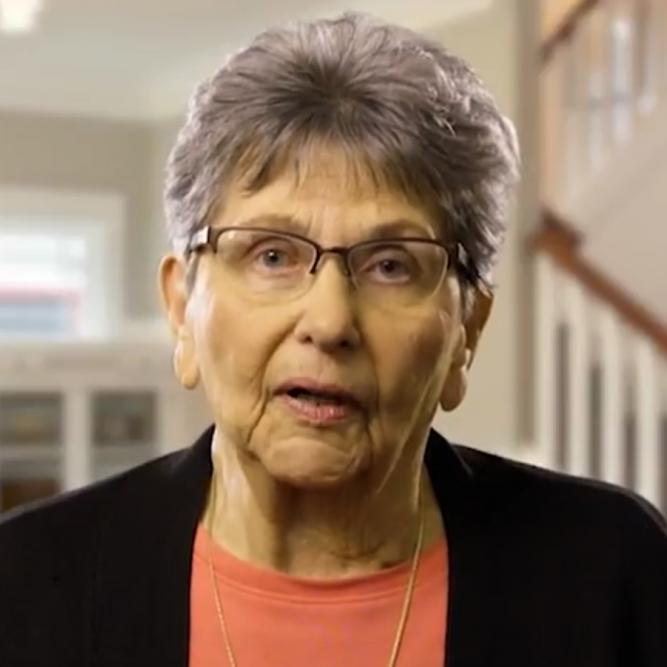Our vascular surgeons are experienced in the latest treatments to improve circulation and restore blood flow. We offer a team approach by working with heart experts, neurosurgeons, imaging specialists, and other experts to make sure you get the care you need.
We create a treatment plan to give you the best possible results using the least invasive treatments, including minimally invasive approaches to treat abdominal aortic aneurysms, carotid artery disease, peripheral artery disease, and more. You can count on our experienced surgeons, innovative technology, and advanced capabilities.
Hybrid Vascular Procedures
Our technologically advanced hybrid operating suite allows us to use imaging equipment and perform minimally invasive procedures (endovascular approaches) and open surgery in the same room. Minimally invasive procedures use smaller incisions, which results in less pain and scarring and a quicker recovery.
We bring together the combined skills of vascular and endovascular surgeons, heart specialists, neurosurgeons, and other experts to do a single procedure that uses different approaches for a less invasive option.
Endovascular Procedures
Endovascular procedures are a minimally invasive way to treat blood vessel conditions, such as aneurysms, atherosclerosis, peripheral artery disease, and carotid artery disease. They offer less pain and a quicker recovery than open surgery. Surgeons make a small incision in your upper thigh or neck and insert a thin, flexible tube (catheter) into an artery to perform various procedures, including:
- Angioplasty and stenting. This procedure, also called balloon angioplasty, opens arteries blocked by plaque (a fatty substance).
- Atherectomy. We use atherectomy to open narrowed leg arteries using a catheter fitted with a cutting device or laser to remove plaque buildup.
- Lysis. This dissolves a blood clot (using a catheter to administer medicine and dissolve the clot.)
- Endovascular aneurysm repair (EVAR). We use EVAR to treat abdominal aortic aneurysms — a weak area in the wall of your lower aorta that bulges out. We place a stent (mesh tube) in the weak area, to strengthen the artery wall and restore blood flow.
- Inferior vena cava filter placement. This procedure prevents a blood clot in your leg from traveling into your lungs (pulmonary embolism).
- Intravascular ultrasound. We use a catheter with an ultrasound probe to see inside your blood vessels.
- Peripheral angiography. We use catheters and X-ray images to look inside arteries in your head, neck, kidneys, legs, and stomach area. If we find blockages, we can treat them using angioplasty, stenting, or other approaches.
- Thoracic endovascular aneurysm repair (TEVAR). TEVAR treats thoracic aortic aneurysms (located in the upper part of your aorta in your chest).
- Transcarotid artery revascularization (TCAR). TCAR treats carotid artery stenosis, a buildup of plaque in your carotid artery (neck artery that supplies blood to your brain). The system filters out plaque that may break loose and returns the filtered blood to a vein in your upper thigh. We place a stent in the artery to hold it open, keep plaque in place, and prevent a stroke or heart attack.
Vascular Surgery
When a vascular problem can’t be treated with noninvasive or endovascular approaches, you can trust our vascular surgeons’ skills and experience. We have advanced expertise performing even the most complex vascular surgeries.
Our vascular team performs:
- Abdominal aortic and peripheral aneurysms repair. We use minimally invasive and open surgery to remove the aneurysm and replace it with a graft.
- Aortic aneurysm surgery. Through an incision in your stomach (abdominal aneurysm) or chest (thoracic aneurysm), we place a tube in the weakened area of the aorta to restore blood flow.
- Bypass grafting. We use an artificial tube or a vessel from another part of your body to reroute blood flow around a blockage or damaged area of the blood vessel.
- Bypass surgery. For patients whose aorta is blocked from plaque that impacts flow to legs and intestines.
- Carotid endarterectomy. This procedure removes plaque from your carotid artery to help prevent stroke and heart attack. We make an incision in your neck and cut away the plaque. Sometimes surgeons place a stent in the artery to keep it open.
- Removal of aneurysms, rib removal. There are surgical options available to treat your vascular conditions.
- Thrombectomy. This surgery removes a blood clot from a blood vessel. We cut into the vessel to remove the clot and repair the blood vessel.
- Transcatheter aortic valve replacement (TAVR). This advanced procedure replaces a damaged aortic valve without removing it. The new valve is compressed until it's placed in position and then expanded. It's held in place with the damaged valve flaps (leaflets).
Hemodialysis Access
People with kidney disease who must have hemodialysis regularly need an opening in a blood vessel where blood can be removed, filtered through a machine, and returned to their body. Vascular surgeons create an opening, or vascular access, that allows blood to be removed and replaced safely.
Vascular access types include:
- Arteriovenous (AV) fistula. Surgeons connect an artery and a vein. This allows more blood to flow into the vein, making it grow larger and stronger. It ensures the vein can handle regular needle insertions for dialysis treatments.
- AV graft. If blood vessels aren’t big enough for an AV fistula, surgeons join an artery and a vein using a flexible tube (graft).
Varicose Vein Therapy
Varicose veins are enlarged, twisted veins that are black or blue. They can form whenever blood pressure increases inside your veins — most commonly in your legs. They can cause pain, throbbing, and itching and swelling.
When weight loss, exercise, or compression bandages or stockings don’t improve varicose veins, we use minimally invasive treatments such as:
- Laser treatment. This noninvasive approach for smaller varicose veins and spider veins applies bursts of light to the skin over the veins.
- Sclerotherapy. This procedure injects a solution that closes small and medium varicose veins, causing them to fade over a few weeks.
- Ablation. To treat large varicose veins, we insert a catheter with either a heated tip into the varicose vein or the vein is closed with surgical glue from inside.
- Branch microphlebectomy vein removal. After vein closure with either heated catheter or surgical glue, if varicose veins persist, these can be removed with microphlebectomy. We make several tiny cuts near a varicose vein and remove the vein and its branches with a tiny hook. The small incisions don't require stitches.
- Vein ligation and stripping. This surgery for large varicose veins uses a few small incisions in your leg. The vein is cut (ligation), tied off, and removed (stripping). We use this approach to treat venous ulcers (sores) and prevent them from coming back.
- Removal of aneurysms, rib removal. There are surgical options available to treat your vascular conditions.



